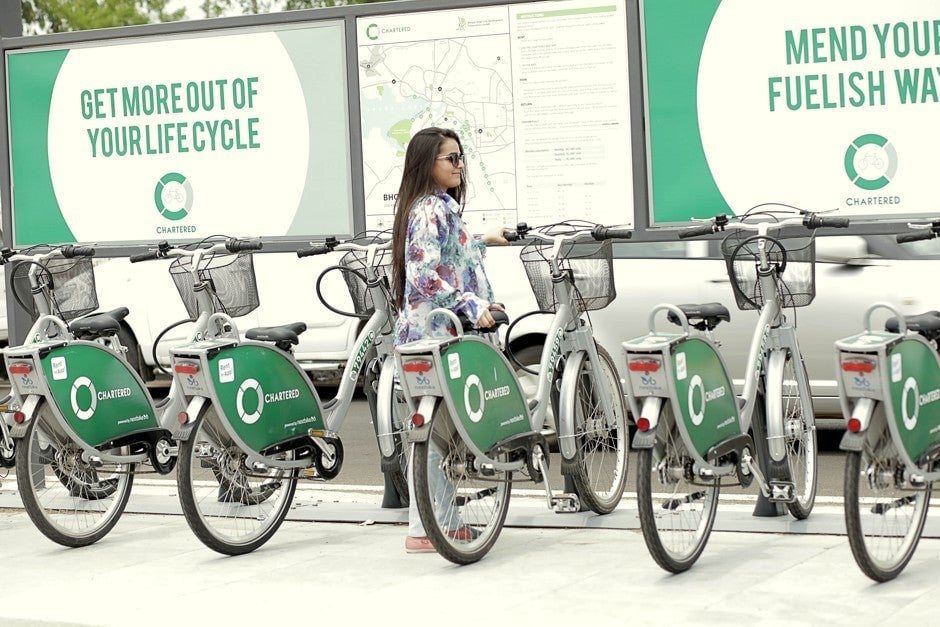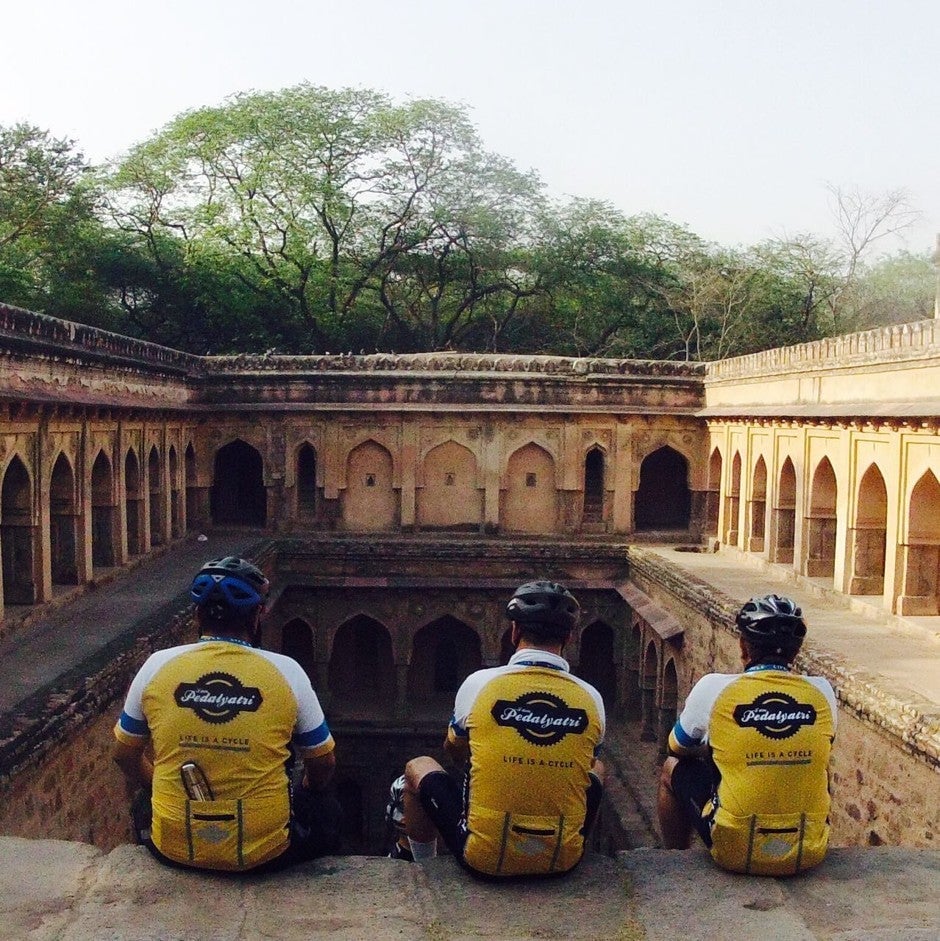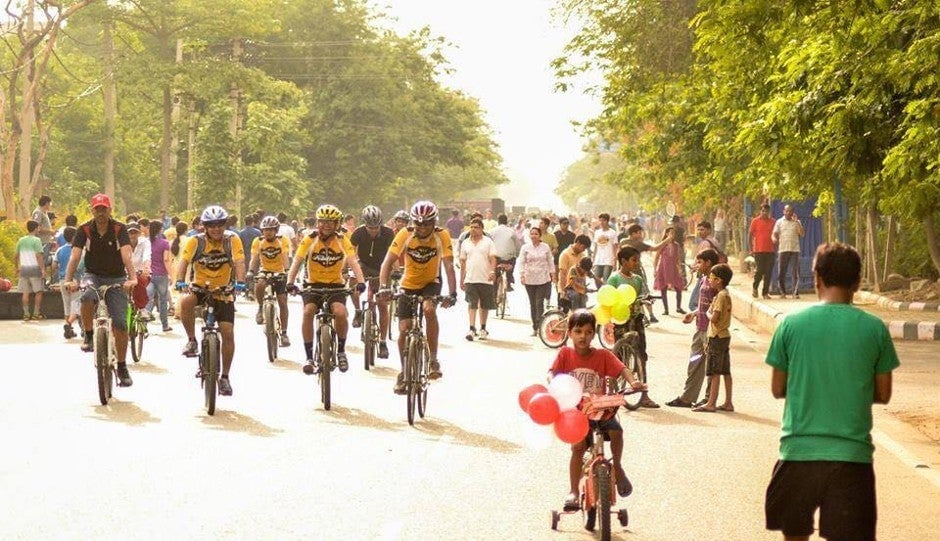Can 500 German bicycles in a city of 1.7 million convince urban Indians to ditch their cars?
A couple of years ago, starting a public bike-share system seemed a tall order for Bhopal, a city of around 1.7 million in central India. In 2015, the proposal was met with ample skepticism from politicians, residents, and non-profits. “In a city where sewerage and supply of drinking water are the major issues, (the Bhopal Municipal Corporation) and the government is busy copying foreign countries,” one politician quipped in The Hindustan Times.


A couple of years ago, starting a public bike-share system seemed a tall order for Bhopal, a city of around 1.7 million in central India. In 2015, the proposal was met with ample skepticism from politicians, residents, and non-profits. “In a city where sewerage and supply of drinking water are the major issues, (the Bhopal Municipal Corporation) and the government is busy copying foreign countries,” one politician quipped in The Hindustan Times.
This June, the same city kicked off India’s first fully-automated, fully integrated public bike-share system—and it’s off to a pretty good start. Within 15 days of its inauguration, around 10,000 people signed up—entirely on mobile. Over half were women. On weekends, especially, the usage has been high, particularly among the youth and families. And already, requests are coming in to have more bike share docks in neighborhoods that don’t currently have them.
It’s early days, but that kind of response has been heartening to Indian urbanists—it signals a change in the conversation around biking in India, where building cycling infrastructure tends to be overshadowed by more pressing urban issues of poverty, pollution, and shoddy housing. Just like their counterparts in China, Indian cities are discovering the virtues of this greener mobility alternative. But the next question is: Can cities translate that excitement into long-term success?
Smaller cities lead the revolution
Previous bike-sharing efforts in Indian cities have largely been unsuccessful. That’s because they were “not bike-sharing but bike rental projects,” says Amit Bhatt, head of integrated urban transport at the World Resources Institute’s India (WRI) Sustainable Cities program. The pilots failed because they were small and not integrated with existing public transit. And they were missing several critical ingredients, such as safer street design. Even in cities with bike lanes, motorists ignored them, as the rules were not clearly explained or enforced. And the bikes were clunky and odious to ride.
In other words, even in places with the political will and proper infrastructure to pursue the idea, the programs themselves were ill-conceived. “Earlier, (cities) were only doing these projects for the sake of it,” Bhatt says. “There were no clear-cut intentions behind them.” But things seem to have changed over the last two years, in part due to the government’s smart cities mission in partnership with Bloomberg Philanthropies. The newfound emphasis on sustainable mobility has elevated the conversation about biking infrastructure. Many of the participating cities are now seriously considering public bike-sharing systems as a part of their smart cities agenda—and they have the funds to implement them.
So far, mid-sized and smaller cities like Bhopal and Mysuru have been the first to roll out state-of-the art third generation bike share systems. Bhopal’s, in particular, is noteworthy. It includes 500 shiny German-made bicycles available at over 50 docking stations, and comes with a two 16-feet-wide bright red bike lanes, running along an existing BRT corridor. The smart bicycles look swanky, come fitted with GPS and anti-theft technology, and are pretty easy and cheap to use. The first half-hour of usage costs Rs10 (around 15 cents), and increases by that amount for every additional hour. A one-year membership runs Rs999—roughly $15. The registration process is completely cashless—users just need a cellphone and a credit card.

Just like most US programmes, the Bhobal bike-share generates revenue mainly through usage fees, advertisements, and sponsorship. It’s a private-public partnership, with the municipal government paying 30% of the cost of operations to the private operators of the system, as long as it’s running at 90% efficiency. That financial model incentivises private companies making and operating the bikes to ensure that most of them are up to speed. “If you want the people who use cars to use bicycles…you have to make the system beautiful and very, very efficient,” says Chandramauli Shukla, CEO of the Bhopal Smart City Development Corporation Limited.
But while he’s heartened by the initial success, Shukla knows that sustaining it is an ongoing task. He plans to use the real-time data gathered by the smart bikes to meet the needs of the growing pool of users in his city—and expand the network to better serve the demand. “We understand that if you don’t make (the project) bigger, probably, the interest will die out in six months or a year,” he says.
Bhopal has done a lot of things right. But its bike-share has also benefitted from timing. Until recently, such a hi-tech system would have been inaccessible to low-income users who lacked credit cards and smartphones. But smartphone penetration—particularly in urban India—has grown by leaps and bounds in the last couple of years. Plus, the central government announced in 2016 that it would be banning large denominations of Indian currency as an anti-corruption measure. This controversial push for “demonetisation” has forced Indians from all economic backgrounds to go digital. That bodes well for other cities considering similar projects.
“Cycling has become the new golf”
When Kushal Arora returned to Delhi after living abroad, he was looking for an activity—something he could do to decompress and work out. A few years ago, he found biking. He started out by riding a few miles at a time, which soon turned into a few more miles, and then to long inter-state trips with fellow riders. Arora, who works at a multinational company in Gurugram, now often commutes to work on one of his four bicycles; on weekends, he takes early morning rides with his biking group, “pedal yatris” (pedal travelers). He even has a folding bike, which he takes with him when he travels. Lately, he’s noticed that he’s no longer one of the few people on the road on the weekends. Many new riding groups have popped up as bicycling has become trendy among urban India’s middle- and upper-class residents: “Cycling has become the new golf.”


What Arora has observed is a cultural shift. Trips by bicycles make up a significant proportion of the total in a large share of urban India. And around 60% of all households own at least one bicycle. But like in neighboring China, commuting by bicycle has long been viewed as something for those who cannot afford cars—low-wage workers like street vendors, deliverymen, and domestic help.
That perception is changing, in part thanks to large public campaigns, rallies, and ride-a-thons advocating for pedestrian- and bike-friendly streets. “Raahgiri” (passenger) day, for example, started in Gurugram in 2013, and has now spread to 56 cities to promote walkability and bike culture. “There’s now a much larger buy-in from the population,” says WRI’s Bhatt, whose organisation helped launch the efforts. “(These campaigns) are mainstreaming a mode of transport which has always played a substantial role in Indian cities.”

Cities like Mysuru and Bhopal have capitalized on the excitement from this citizen engagement, and fed into it through their bike-share programs. Some of the bigger cities, however, have fallen behind. The Delhi-Gurugram metro, where Arora is located, has yet to create a bike-friendly environment for him and his fellow riders. To drum up support for infrastructure and respect for cyclists, Arora launched a social media campaign along the lines of the famous Ice Bucket challenge in 2015: the #pedal2workchallenge. “One of the main philosophies of #pedal2workchallenge is that we cannot wait for the government to provide us with the facilities; we have to get the masses together, get on the streets, and just ride,” he says. “If there are 20 of us and we take one of the lanes, nobody can touch us, because unity is strength.”
Although he’s happy that cities are thinking about ways to make biking more popular, he knows that India still has a long way to go. “On a scale of one to ten, if ten is the maximum intensity of this revolution coming our way, we’re probably sitting at a one,” he says.
This post first appeared on CityLab. We welcome your comments at [email protected].